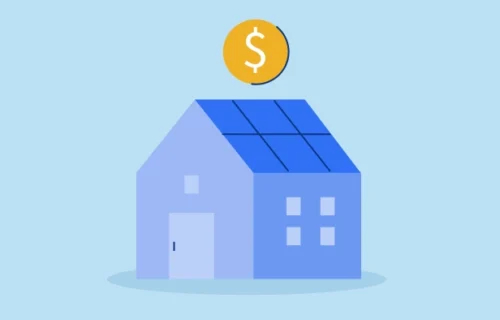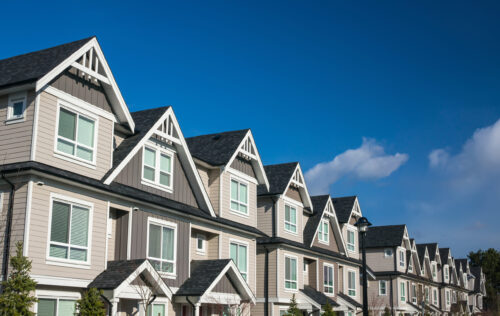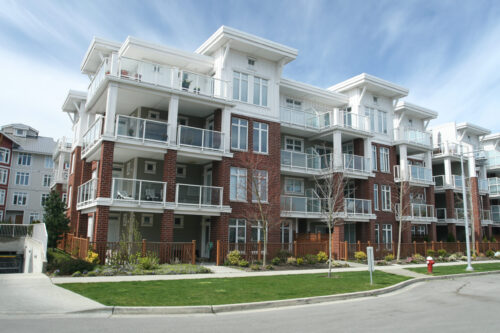
Connect with a Lima One expert today!
If you’d like to know more about this topic or see how it applies to your project, let’s talk.
The Multifamily Market is Expected to Rebound in 2021
Experts Predict a Comeback Year for Multifamily Real Estate
Multifamily lending has seen its share of ups and downs over the past couple of years. 2019 was a record year for multifamily lending. Then 2020 came along and everything changed.
In 2019, small multifamily originations reached an all-time high of $59.2 billion. Prior to COVID, multifamily originations were forecasted to jump 9% to $395 billion in 2020, beating 2019’s record. Pre-COVID, loan terms offered on multifamily assets were better than ever before. The market saw historically low rates, high leverage, and aggressive underwriting. Loans were available for multifamily assets of all shapes and sizes.
Things were booming, with no end in sight—until the pandemic began.
When news of COVID hit the U.S., multifamily sales activity saw a 35% drop. Deals under contract fell through and deals that were extended fell through after the extension. The number of deals that fell through in three months between March and May 2020 was seven times higher than the average percentage of deals that fell through over four years between 2015 and 2019. Because of the uncertainty, multifamily lenders either stopped, paused, or slowed down their funding. But things gradually loosened up as 2020 progressed. The result was overall decreases both in multifamily housing starts and in multifamily loan originations.
It took a few months, but multifamily housing is recovering and looks to be ready to boom again in 2021. Initially, interest rates on multifamily financing spiked, but they have dropped to pre-COVID levels and kept falling with an overall low interest environment. LTVs and LTCs have been reduced, which means leverage is still about 5% lower than pre-COVID levels at this point, so that is a factor to watch closely as the year goes on.
Multifamily Trends to Watch
The face of the multifamily real estate market has changed substantially since March 2020 and continues to change because of trends in the real estate investment market. Workforce housing is becoming one of the brightest prospects in the multifamily market. It is proving to be immune to pandemics and recession. Workforce housing is designed for people in middle-income professions such as police officers, firefighters, teachers, health care workers, retail clerks, etc. Think 2020’s essential workers, and the type of housing they need.
Simply put, as long as essential work is needed, there will also be a housing demand for those workers. Because of the demand it creates, workforce housing is considered by many to be a smart area for multifamily investors to consider in the long term. While investing in Class A multifamily properties comes with some uncertainty, Class B and Class C properties retain their solid performance. Workforce housing is housing affordable to households earning between 80 and 120% of the area median income. While it may overlap with affordable housing that lower income people qualify for in some markets, these investments seek to serve people who earn in the moderate-income tiers.
Bouncing back
The multifamily industry weathered the 2020 recession better than most sectors, but lost rental income, deferred rents, and delinquencies connected to eviction moratoriums made cash flow tougher for some investors. However, most real estate experts expect the market to rebound by late 2021. The economic rebound will likely lead to rising multifamily demand. Experts expect demand levels to fall short of pre-COVID peaks in 2018 and 2019 but feel confident demand should rise significantly from 2020. Multifamily markets around the country are already beginning to rebound, showing increasing rent rates and occupancy growths.
Yardi Matrix released a new report that shows the Inland Empire and Sacramento are among the top three markets for occupancy growth year-over-year. Occupancy in the Inland Empire increased 2.2% in January while Sacramento showed a 1.2% increase. They also showed strong rent growth thanks to limited new supply coming online. Secondary and tertiary markets are also seeing rents pop, continuing a COVID-era trend that saw renters began a mass exodus into the suburbs looking for more space and less expensive rent. Metro areas like Atlanta, Tampa, Dallas, and Charlotte are considered high-migration areas because renters have the choice of urban and suburban locations.
Because renters are looking for affordable housing, Class B and Class C assets should continue to outperform in 2021 with low vacancy and steady rent growth. With little demand for expensive housing, on the other hand, the timeline for Class A assets to recover will be slower. As market conditions improve, multifamily investment volume is expected to increase in 2021. CBRE research predicts multifamily investment volume will reach about $148 billion this year, lower than 2019’s record level of $191 billion but a 33% gain over the 2020 estimate of $111 billion.
Multifamily Market in 2021
Nate Trunfio, Lima One’s Senior Director of Sales and Marketing, said at a recent conference that the market for multifamily will be “bullish” in 2021. Nearly 98% of investors across all regions aim to expand their portfolios, with approximately 60% looking to expand by more than 10%.
Colliers’ research anticipates a 50% surge in investment activity in the year’s second half as investor confidence rises. Leverage and proceeds will generally remain lower than pre-COVID, rates will likely remain low, and capital will be available and prevalent. Most lenders are eager to increase holdings in multifamily lending because they consider that segment as one of the safest asset classes. The continued availability of debt capital, led by Fannie Mae and Freddie Mac, are explicitly set up to provide support to the industry in economic downturns.
With a market poised to be this hot, the last thing you want to do is miss out on an investment property. Whether you’re looking to purchase or refinance a multi-family real estate in need of value-add rehab or currently turnkey ready, Lima One’s Multifamily loan program has options available to help you fund your investment with interest-only bridge loans that get you ready for agency takeout When it’s time to fund your next multifamily rental project, let Lima One help you.
Subscribe for More Insights
Get the latest industry news & Lima One updates.








